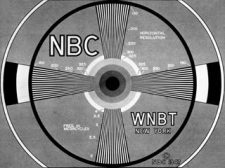
These are provisional thoughts, a tentative exploration into what the words ‘real time personal identity’ might mean. (With apologies to Anthony Powell.) It’s often said, with some regret, that the Internet wasn’t designed with an identity layer. Personal identity is a fundamental element, not a simple widget that can be bolted on as an after thought. Although that does seem to be the road we’re traveling on. So we’re left with the observation that in the online world, personal identity is fragmented and dispersed. Facets of identity appear situationally where ever they’re needed to assure the consistency of a transaction or the state of an experience.
Since the Greeks, the common approach to thinking about time is to speak of a series of “now points.” In a stateless medium like the Web, tracking a personal identity from “now point” to “now point” requires additional apparatus. Each cloud-based domain, or application, takes responsibility for tracking personal identity within its sphere. Although one can easily imagine a consolidation as each cloud application platform begins to offer identity, privacy and audit services. National identities dissolve and re-form under the flags of Google, Microsoft, Amazon and a convergence of financial institutions and telecoms.
Let’s slip the bonds of the Network for a moment and take a look a personal identity in our daily life. As I walk down the street, is there a moment when I am without personal identity? Walking through the crowd, I am anonymous– just a face in the crowd. But I am specifically anonymous– I’m not a blank shell, a default avatar moving through space. I look the way I look. I wear the clothes that I’m wearing. I walk with a purpose that is my own.
Was life itself designed without an identity layer? In the instances in which we transact with other people, businesses, organizations and governmental agencies– additional apparatus have always been required to track us from “now point” to “now point.”
At this particular “now point,” let’s change the frame of reference. Rather than viewing time as a series of discreet points, let’s now think of time as a continuous stream. This is akin to what physicists do when they think of light– now as a particle, now as a wave.
Moving back to the Network, if we view the concept of an application polling another application for status or a data transaction, we have the equivalent of a discreet “now point.” When we begin to discuss “real time” on the Network, there are two separate frames in which the conversation unfolds.
If time is a series of discreet “now points,” then “real time” is a higher number of “now points” per unit of time. Here perhaps, we run into Zeno’s paradox— What is the total number of possible “now points” between this moment and the next moment? If the metronome ticks at 120 beats per minute and we crank the dial up to 200 beats per minute– the music of time becomes much more frantic. To approximate a flow, the “now points” must have a dense frequency (24 frames per second).
The opponents of “real time” often rely on this argument. The music is too fast to dance to– In our haste we’ll make a mis-step. If only the tempo were turned way down, so that each step could be measured, considered, and thoughtfully taken. One wonders if the result of this prescription could even be called dancing.
The idea of time as a continuous flow also has a Greek origin. The fragments of Heraclitus compare our experience of time to stepping into a stream. If we unpack this metaphor, we might ask: from whence do we step, when we step into a stream? If we are to think of our experience of time as a stream– when is it that we stand outside of time? We are always already standing in one stream or another.
Now let’s switch the channel and move back to the idea of “real time” and streaming time. Some streams move at a faster pace than others. This is undeniably true, but is the lazy river rolling along any less “real time” than the raging torrent of flood waters? Is the tightly packed schedule of the executive more “real time” that the couple taking a late summer afternoon off to eat strawberries and drink wine under the shade of a tree? Something that already flows doesn’t need to increase its tempo to achieve the appearance of a real time flow.
Perhaps we’re ready to think about the phrase “real time personal identity,” and what it might mean. Is there a moment when I’m logged out of my personal identity in daily life? As a social being, I have a use for three different modes of connection: the anonymous, the public and the private. The value of these modes seem to be independent of whether I’m on or off the Network in any given moment.
Thinking of on or off surfaces the question of the pervasive and ubiquitous Network. Is there ever a time when I’m logged out of the Network? Is there a moment when I have no presence whatsoever? To check on a person’s presence, I can Google them to see what’s visible on the Network according to Google’s index of things that are. My presence on the Network begins to have the character of an instant messenger status message. I’m there, I’m always there– I may just not be available to listen or to speak.
A reciprocal exchange of identity artifacts, a la Skype or IM, can establish a public and/or private channel. We subscribe to each other’s messages, and this subscription is persistent with different status settings. The status setting serves the function that space/place does in the physical world.
In a relationship within a continuous, real-time network– why would I need to log in more than once for the term of the relationship? When would I actually be logged out? My presence and my online presence might be the same.
5 Comments


